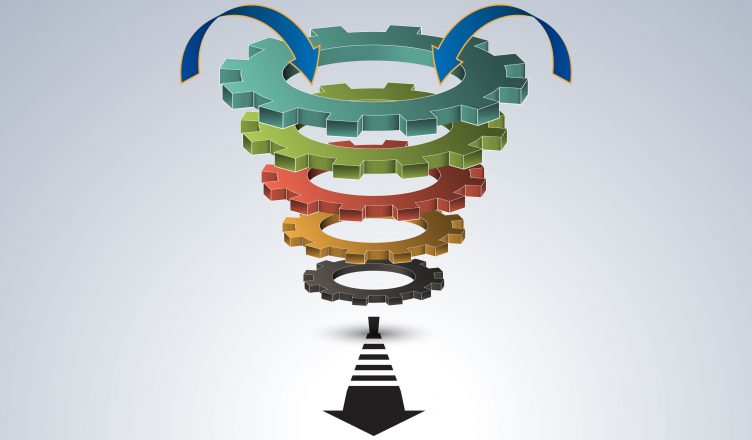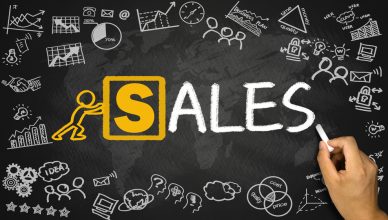To make more sales, you need to understand who your customers are, what they want to buy, and when they want to buy it.
Having that knowledge allows your sales reps to make the best possible use of their time. The more efficient your sales reps are, the more money you’ll make.
The question is, how do you obtain this information?
The answer is (drumroll, please)… a sales route planner like Route4Me. Such software will help you understand your customers and make more informed business decisions.
What Makes Sales Strategies Successful?
Before we get into the benefits of using a route planner, let’s take a step back and look at the bigger picture.
What is it, exactly, that makes a sales strategy successful?
It all starts with people. In the sales industry, there are four kinds of people:
- Lead: These people aren’t your customers yet, but they could be. This is everyone in your target demographic (in terms of age, gender, location, etc.) that you’re able to contact.
- Prospect: A prospect is closer to buying than a lead – they’ve already shown that they’re interested in what you’re offering. Your rep should be ready to move in and make the sale.
- Qualified Prospect: This group is even closer to becoming customers than prospects. You’ve already interacted with them – it shouldn’t take much more effort now to turn them into customers.
- Sold: These are your current customers. You’ve sold to them at least once. Now, you should focus on selling to them again. Maybe there are other services you could offer them, or perhaps it’s possible to upgrade their current service… remember, it’s always easier to sell to someone who’s bought from you before than someone who hasn’t.
Knowledge Is Power
Keeping track of where every customer is in the lead-prospect-qualified prospect-sold process allows you to make your sales operation extremely efficient.
You’ll need a data organization tool. Small businesses might only need a simple app like Microsoft Excel, while larger companies with complex databases will need a more specialized program. Without software, you won’t be able to keep track of your customers.
Want To See For Yourself How Route4Me Can Boost Your Profits?

Of course, where your customers fall in the sales funnel isn’t the only information worth collecting.
If your salespeople work on commission, you’ll also need to keep track of which customers “belong” to each sales rep. This allows your reps to get the money they earned, and it also shows you which sales techniques are working the best. The methods of a successful rep should be copied by everyone. The methods of an unsuccessful rep should be discontinued.
It makes sense to group your customers by industry so that when you have targeted offers or specials, you will quickly know who you need to contact. Company size should also be recorded for this reason.
Some sales operations group prospects by the size of their potential contract. That way, they can focus their attention on where they can make the most money.
One last thing: location data. This information is incredibly important for your sales staff. You shouldn’t send your reps back and forth across your entire service area. That’s a waste of time (and gas). Instead, you should break your service area up into different territories and assign a rep to each territory so that their routes are more efficient. You’ll need location data to do that.
Interactivity Is Key
A route planner will improve your sales staff’s productivity as it makes it easy to visualize customer data.
But the best vehicle route planning software can do more than just show you information – they let you interact with your data and customize the program as you see fit.
For example, some route planners have a color coding feature that lets you choose a color for each of your stops. You could make your hot leads red and your cold leads blue. That’ll help you keep everything organized.
Also, an interactive map screen allows you to pull up real-time data about sales activity in your territories. Having this information at your fingertips will help you understand your strengths and weakness more completely.
What Strategy Works For Each Customer Group?
So, you’ve separated your potential customers into leads, prospects, qualified prospects, and sales.
What now?
Each group demands a different approach. First, let’s start with your sales.
Just because they’ve bought from you before doesn’t mean they should be ignored. They trust your brand, sure, but it still takes some effort to make sure your customers stay your customers.
- If your product requires training or onboarding, make sure customers receive it
- Provide customers with new resources that will help them boost their ROI
- Check-in with customers regularly and confirm that their experience with you is going well
Qualified prospects are in the negotiation phase. You must come to the table prepared.
- Know your price points, how low you can go while still turning a profit, and all other relevant facts and figures
- Upselling is good for your bottom line, but don’t go overboard – you might alienate the customer and blow the sale
- Value-added services often turn a “maybe” into a “yes”
Prospects, of course, need a little more convincing.
- Show them how your product and their needs align
- Don’t be generic – tailor your pitch so that it appeals to their specific industry
- Always be helpful, encouraging, and informative
With a sales route planner, you’ll be able to turn more of your leads into prospects, more of your prospects into qualified prospects, and more of your qualified prospects into paying customers.
Do you have any questions about how to understand your customers and make your routes more efficient? Let us know in the comments section below.
Want To See For Yourself How Route4Me Can Boost Your Profits?








